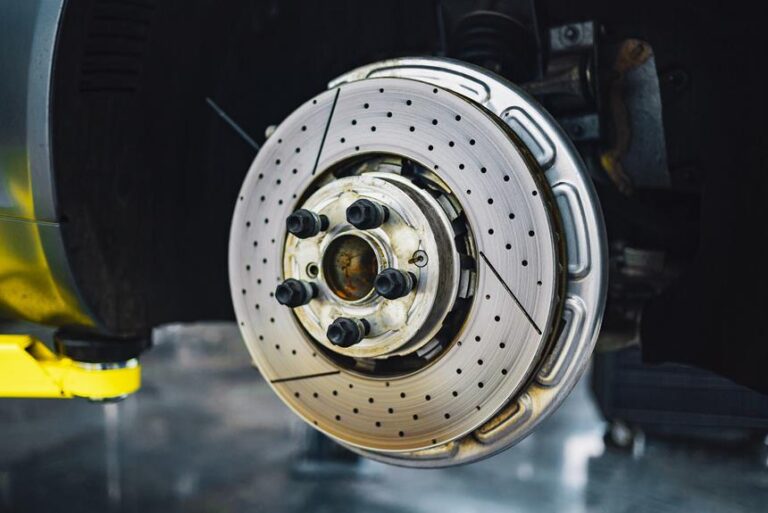Fleet Tire Management: Tips for Optimal Performance
In the fast-paced world of fleet management, maintaining optimal performance is key. Just as a well-oiled machine relies on its wheels, so too does a fleet rely on its tires.
These rubber companions bear the weight of heavy loads, navigate treacherous terrains, and endure countless miles. To unlock the full potential of your fleet, it is imperative to master the art of tire management.
In this article, we delve into the technicalities, analytics, and best practices that will empower you to achieve tire performance freedom.
Key Takeaways
- Regular tire inspections and maintenance are essential for fleet safety and accident prevention.
- Proper tire pressure maintenance improves fuel efficiency, vehicle handling, and extends tire lifespan.
- Tire maintenance directly impacts safety and cost-efficiency, preventing decreased fuel efficiency, premature wear, and reduced traction.
- Choosing the right tires for your fleet based on load and speed requirements, terrain, and weather conditions is crucial for optimal performance and safety.
The Importance of Regular Tire Inspections
Regular tire inspections play a pivotal role in enhancing fleet safety and preventing potential accidents. To ensure optimal performance and longevity of tires, fleet managers must establish a comprehensive tire inspection program. This program should include regular inspections and adherence to a tire inspection checklist.
The frequency of tire inspections depends on several factors, including the type of vehicle, the terrain it operates on, and the average mileage covered. In general, it is recommended to inspect tires at least once a month or before and after long trips. Additionally, inspections should be conducted after any significant road hazards or incidents that may have affected the tires' integrity.
A tire inspection checklist should cover various aspects, including tire pressure, tread depth, wear patterns, and any signs of damage or irregularities. It is crucial to maintain proper tire pressure as underinflated or overinflated tires can lead to reduced fuel efficiency, uneven wear, and decreased handling performance. Tread depth should also be regularly checked, as worn-out tires can compromise traction and increase the risk of hydroplaning.
Inspecting tires for wear patterns can help identify alignment or suspension issues that may need attention. Any signs of damage, such as cuts, bulges, or punctures, should be addressed promptly to prevent tire failure.
Regular tire inspections, along with routine maintenance and proper tire care, contribute to safer and more efficient fleet operations.
Tire Pressure Maintenance for Fleet Vehicles
Proper tire pressure maintenance is crucial for fleet vehicles as it directly impacts their performance and overall safety.
Regular checks should be conducted to ensure that tires are inflated to the manufacturer's recommended pressure levels.
Maintaining optimal tire pressure not only improves fuel efficiency but also enhances vehicle handling, reduces the risk of accidents, and extends tire lifespan, ultimately saving on maintenance costs.
Importance of Regular Checks
Performing regular inspections and maintenance on fleet vehicles is crucial to ensuring optimal tire pressure and overall vehicle performance. Regular checks for tire maintenance should be conducted to prevent potential issues and ensure the safety of both the driver and the vehicle.
Fleet managers should establish a comprehensive tire maintenance program that includes routine inspections, tire pressure checks, and proper tire rotation. These checks should be conducted at regular intervals to identify any signs of wear and tear, such as uneven tread wear or damage to the sidewalls.
Additionally, regular checks allow fleet managers to identify any underlying issues that may affect tire performance, such as wheel misalignment or suspension problems. By implementing these regular checks, fleet managers can maximize tire lifespan, improve fuel efficiency, and ultimately reduce overall operating costs.
Impact on Fuel Efficiency
The effective management of tire pressure significantly impacts the fuel efficiency of fleet vehicles. Maintaining proper tire pressure is crucial for optimizing fuel efficiency and reducing operating costs. Underinflated tires can increase rolling resistance, leading to decreased fuel economy. Conversely, overinflated tires can result in uneven wear and reduced traction, negatively affecting fuel efficiency.
Regular tire maintenance, including regular pressure checks and adjustments, is essential to ensure optimal fuel efficiency. Fleet managers should establish a comprehensive tire maintenance program that includes regular inspections, tire rotations, and alignment checks to maximize fuel efficiency and prolong tire lifespan. Additionally, investing in advanced tire pressure monitoring systems can provide real-time data on tire pressure, allowing for timely adjustments and proactive maintenance.
Safety and Tire Lifespan
How can fleet managers ensure the safety and longevity of their tires by properly maintaining tire pressure?
Tire maintenance is a crucial aspect of fleet management that directly impacts safety and cost-efficiency. By implementing the following safety measures and tire maintenance practices, fleet managers can optimize tire performance and minimize the risk of accidents:
- Regular Pressure Checks: Fleet managers should conduct routine tire pressure checks to ensure that the tires are inflated to the manufacturer's recommended levels. Underinflated tires can lead to decreased fuel efficiency, premature tire wear, and reduced traction, posing a safety hazard.
- Proper Tire Rotation: Regularly rotating tires helps distribute the wear evenly, extending their lifespan and enhancing overall vehicle performance. Fleet managers should follow the manufacturer's guidelines for tire rotation intervals and patterns.
- Professional Inspections: Fleet managers should collaborate with certified technicians who can conduct thorough tire inspections and identify any potential issues such as tread wear, sidewall damage, or tire punctures. Prompt repairs or replacements can prevent accidents and breakdowns.
Choosing the Right Tires for Your Fleet
Selecting the appropriate number of high-quality tires for your fleet is crucial for ensuring optimum performance and safety. When it comes to tire selection, there are several key tips to consider.
- First and foremost, it is important to choose tires that are designed to handle the specific load and speed requirements of your fleet vehicles. This will help to prevent premature wear and ensure that your tires can withstand the demands of the road.
- Additionally, considering the terrain and weather conditions that your fleet operates in is essential. Different tires are designed for different environments, so selecting tires that are appropriate for your specific conditions will help to maximize performance and safety.
Once you have chosen the right tires for your fleet, it is important to implement tire maintenance strategies to prolong their lifespan and optimize their performance.
- Regularly inspecting your tires for signs of wear and damage, such as uneven tread wear or cuts in the sidewall, is crucial.
- Inflating your tires to the recommended pressure levels is also important, as underinflated or overinflated tires can lead to decreased fuel efficiency and increased risk of accidents.
- Additionally, rotating your tires regularly can help to ensure even wear and prolong their lifespan.
Proper Tire Rotation Techniques for Fleet Vehicles
Proper tire rotation techniques are crucial for fleet vehicles to prevent uneven tire wear, maximize tire lifespan, and ensure optimal performance.
Regularly rotating tires helps distribute the weight and stress evenly across all four wheels, reducing the risk of premature wear on specific tires.
Tire Wear Prevention
Implementing regular and strategic tire rotation schedules is essential for fleet managers aiming to minimize tire wear and extend the lifespan of their vehicles' tires. By following proper tire rotation techniques, fleet managers can ensure even tread wear, which improves overall tire performance and safety.
Here are three tips to prevent tire wear and optimize tire performance:
- Rotate tires regularly: Fleet managers should establish a tire rotation schedule based on the manufacturer's recommendations. This typically involves rotating tires every 5,000 to 8,000 miles or during regular maintenance intervals. By rotating tires, the wear pattern is distributed more evenly, resulting in extended tire life.
- Inspect tire pressure: Maintaining proper tire pressure is crucial for preventing excessive wear. Fleet managers should regularly check tire pressure and adjust it according to the manufacturer's specifications. Underinflated tires can lead to increased wear on the outer edges, while overinflated tires can cause wear in the center.
- Proper tire storage: When not in use, fleet managers should store tires in a cool, dry, and clean environment. Tires should be kept away from direct sunlight, chemicals, and extreme temperatures. Additionally, tires should be stored in a vertical position to prevent deformations.
Maximizing Tire Lifespan
To achieve maximum tire lifespan, fleet managers must regularly rotate their vehicles' tires according to recommended schedules, ensuring that even wear patterns are maintained. Proper tire maintenance is essential for fleet operations, as it directly impacts performance, fuel efficiency, and overall safety.
Regular rotation helps distribute the wear evenly across all tires, preventing premature tire replacement and ensuring optimal performance. By rotating tires, fleet managers can identify any potential issues such as misalignment or improper inflation, allowing for timely adjustments and preventing further damage.
Additionally, regular rotation extends the lifespan of tires by minimizing uneven wear, which can lead to decreased traction and handling capabilities. It is important for fleet managers to closely monitor tire wear and plan for timely tire replacement based on industry standards and manufacturer recommendations to ensure safe and efficient operations.
Importance of Regular Rotation
Regular tire rotation is an essential aspect of tire maintenance that fleet managers should prioritize. Here are three key reasons why:
- Maximizing Treadwear: Tire rotation helps distribute the wear evenly across all four tires. This ensures that each tire wears down at a similar rate, maximizing the overall tread life of the tires. By rotating the tires regularly, fleet managers can extend the lifespan of their tires and minimize the need for premature replacements.
- Maintaining Optimal Performance: Uneven tire wear can negatively impact a vehicle's performance and handling. Regular rotation allows all tires to experience different positions, preventing any one tire from bearing excessive weight or stress. This promotes balanced performance, enhances traction, and improves fuel efficiency.
- Preventing Irregular Tire Wear Patterns: Certain driving conditions or vehicle characteristics can cause tires to wear unevenly. By rotating the tires at recommended intervals, fleet managers can prevent irregular wear patterns such as cupping, feathering, or scalloping. This not only promotes a smoother and safer ride but also reduces the risk of tire-related issues and blowouts.
Tips for Extending the Lifespan of Fleet Tires
What strategies can be employed to maximize the longevity of fleet tires?
Fleet managers understand the importance of tire maintenance and replacement to ensure optimal performance and safety. Implementing effective strategies can help extend the lifespan of fleet tires, reducing costs and improving overall fleet efficiency.
Regular tire maintenance is crucial in maximizing tire longevity. This includes routine inspections to check for signs of wear, proper tire inflation, and alignment. Maintaining proper tire pressure is essential as underinflated or overinflated tires can lead to uneven wear, reduced fuel efficiency, and increased risk of tire failure. Regular tire rotations should also be conducted to ensure even wear across all tires.
Additionally, fleet managers should consider investing in quality tires that are designed for the specific needs of their fleet. Choosing tires with a longer tread life and higher load capacity can significantly impact tire longevity. Furthermore, using tire pressure monitoring systems (TPMS) can help monitor tire pressure in real-time and alert fleet managers of any deviations.
When it comes to tire replacement, fleet managers should follow the manufacturer's recommendations for mileage and wear indicators. Regularly inspecting the tires for signs of damage, such as cuts, bulges, or punctures, is crucial to identify potential risks and replace tires as needed.
Best Practices for Tire Storage and Handling in Fleet Management
Fleet managers should prioritize implementing proper storage and handling practices to maintain tire quality and prolong their lifespan. By employing the following tire storage techniques and proper tire handling, fleet managers can ensure optimal performance and reduce the risk of premature wear and damage:
- Tire storage:
- Keep tires in a cool, dry, and well-ventilated area to prevent heat and moisture damage.
- Store tires in a vertical position to avoid distortion and reduce the risk of flat spotting.
- Rotate tires regularly to prevent uneven wear and maintain their shape.
- Proper tire handling:
- When handling tires, use appropriate lifting equipment to avoid bending or twisting the sidewalls.
- Avoid dropping or throwing tires, as this can cause internal damage.
- Inspect tires regularly for signs of wear, cuts, or punctures and replace them if necessary.
- Tire inflation:
- Maintain proper tire inflation pressure to ensure optimal performance and fuel efficiency.
- Check tire pressures regularly, especially before long trips, to reduce the risk of blowouts.
Frequently Asked Questions
What Are the Common Signs of Tire Wear and When Should I Replace My Fleet Tires?
Signs of tire wear include uneven tread wear, cracks, bulges, and low tread depth. Fleet tires should be replaced when the tread depth reaches 2/32 of an inch or when any of these signs are present.
How Often Should I Check Tire Pressure for Fleet Vehicles?
Regular tire pressure checks are crucial for maintaining proper tire pressure in fleet vehicles. By regularly monitoring tire pressure, fleet managers can ensure optimal performance, improve fuel efficiency, and extend the lifespan of their tires.
What Factors Should I Consider When Selecting Tires for My Fleet?
When selecting tires for a fleet, several factors should be considered. These include tire performance, durability, traction, fuel efficiency, and maintenance requirements. Optimal tire selection is crucial for ensuring fleet performance and minimizing maintenance costs.
Is There a Recommended Schedule for Rotating Fleet Tires?
Regular tire rotation is crucial for optimal fleet performance. There is a recommended schedule for rotation intervals, typically every 5,000 to 7,500 miles. This practice offers several benefits, including even tread wear, improved handling, and extended tire life.
Can You Provide Some Additional Tips on How to Properly Store and Handle Fleet Tires?
Proper storage and handling of fleet tires is crucial for optimal performance. It is essential to store them in a controlled environment with a recommended temperature range and use appropriate handling equipment to prevent damage.
Conclusion
In conclusion, effective tire management is crucial for optimal performance of fleet vehicles. Regular inspections, proper tire pressure maintenance, selecting the right tires, and implementing appropriate rotation techniques are essential practices.
Additionally, extending the lifespan of fleet tires can significantly reduce costs and improve overall efficiency. Lastly, proper storage and handling of tires are important to maintain their quality.
By implementing these best practices, fleet managers can ensure safer and more reliable operations while maximizing the performance of their vehicles.







